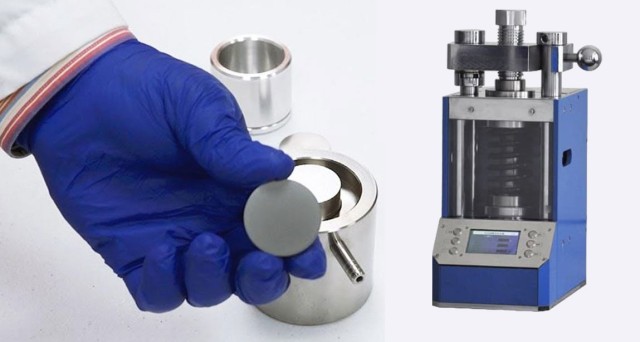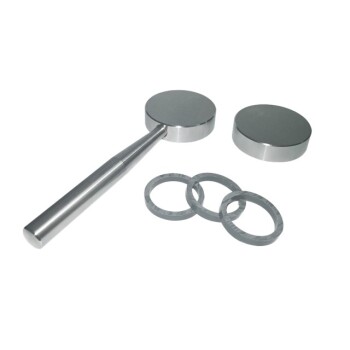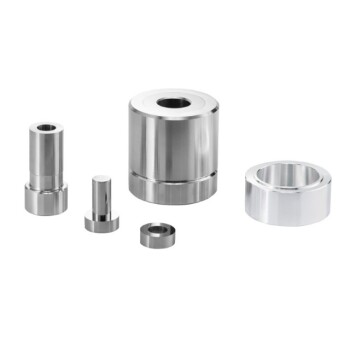목차
XRF 분석 및 시료 준비 소개
X선 형광(XRF) 분석은 비파괴적이고 매우 정확한 결과를 제공하는 재료 특성화의 핵심 기술입니다. 그러나 이러한 결과의 품질은 샘플의 세심한 준비에 따라 크게 달라집니다. 이 문서에서는 균질성 보장, 효과적인 레시피 설계, 적절한 장비 선택, 안전 프로토콜 유지, 일관된 워크플로우 개발, 교육 및 규정 준수를 통한 기술 향상 등의 중요성을 강조하면서 XRF 샘플 준비의 복잡성에 대해 자세히 설명합니다. 이러한 입증된 7가지 PRESS 전략을 숙달하면 최적의 결과를 얻고 XRF 분석의 정밀도와 신뢰성을 새로운 차원으로 끌어올릴 수 있습니다.
P - 준비: 균일한 시료 확보
X선 형광(XRF) 분석을 위한 시료 준비는 결과의 정확성과 신뢰성에 직접적인 영향을 미치는 중요한 단계입니다. 목표는 재료 유형이나 형태에 관계없이 일관되게 분석할 수 있는 균질한 시료를 만드는 것입니다. 이 섹션에서는 균질화 기술과 고품질 XRF 펠릿 다이 사용에 특히 중점을 두고 XRF 분석을 위해 시료를 준비하는 방법에 대한 자세한 단계를 살펴봅니다.
균질화 기법
균질화는 시료의 구성을 균일하게 만드는 과정으로, 정확한 XRF 분석을 위해 필수적입니다. 균일한 시료를 얻기 위해 일반적으로 다음과 같은 기술이 사용됩니다:
-
그라인딩: 균질화의 첫 번째 단계는 시료를 미세한 분말로 분쇄하는 것입니다. 이상적으로는 입자 크기가 75마이크로미터(<75μm) 미만이어야 합니다. 이렇게 하면 시료가 균일하게 분포되고 부정확한 판독값을 초래할 수 있는 빈 공간이 발생할 가능성이 줄어듭니다. 대부분의 재료의 경우, 이 정도의 미세도로 분쇄하면 균일한 시료를 얻을 수 있습니다.
-
혼합: 분쇄 후에는 샘플을 완전히 혼합해야 합니다. 이 작업은 기계식 믹서를 사용하거나 분말을 수동으로 저어서 수행할 수 있습니다. 목표는 시료의 모든 부분이 균일하게 나타나도록 하는 것이며, 이는 일관된 XRF 분석을 위해 매우 중요합니다.
-
바인딩: 경우에 따라 분말 시료에 결합제를 첨가할 수 있습니다. 이는 펠릿으로 압축하기 어려운 시료에 특히 유용합니다. 일반적인 결합제에는 셀룰로오스 왁스 혼합물이 포함되며, 일반적으로 시료에 20~30%의 비율로 바인더를 첨가합니다. 결합제는 샘플을 함께 고정하고 균일한 펠릿을 만드는 데 도움이 됩니다.
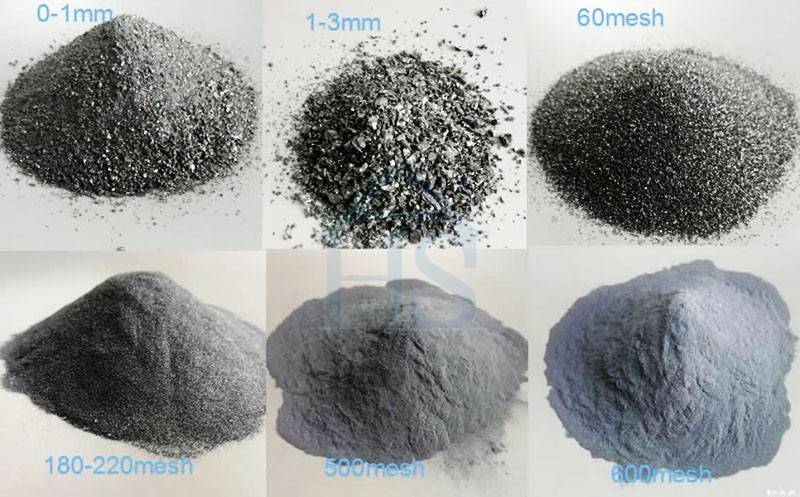
고품질 XRF 펠릿 다이 사용
샘플이 균질화되면 다음 단계는 고품질 XRF 펠릿 다이를 사용하여 펠릿으로 압축하는 것입니다. 압축 펠릿은 분석을 위한 보다 균일하고 안정적인 표면을 제공하기 때문에 루스 파우더에 비해 더 엄격한 시료 준비 방법입니다. 따라야 할 단계는 다음과 같습니다:
-
다이 로드: 샘플을 다이에 로드하기 전에 샘플에 덩어리가 없고 완전히 균일한지 확인합니다. 이는 일관된 펠렛을 만드는 데 매우 중요합니다.
-
를 누릅니다.: 유압 프레스를 사용하여 샘플에 압력을 가합니다. 권장 압력 범위는 20~30톤(20~30T)입니다. 이 압력은 시료가 과열되거나 변형되지 않고 조밀하고 균일한 펠릿을 만들기에 충분합니다.
-
윤활: 샘플이 달라붙지 않도록 펠릿 압착 윤활제를 다이에 바릅니다. 이렇게 하면 펠릿을 손상시키지 않고 다이에서 쉽게 제거할 수 있습니다.
-
반복: XRF 펠릿으로 눌러야 하는 각 시료에 대해 이 과정을 반복합니다. 신뢰할 수 있는 결과를 얻으려면 압착 공정의 일관성이 중요합니다.
성공적인 XRF 펠릿 프레싱을 위한 팁
-
품질 다이: 일관된 펠릿 모양과 크기를 보장하려면 항상 고품질 XRF 펠릿 다이를 사용해야 합니다. 품질이 좋지 않은 다이를 사용하면 불규칙한 펠릿이 생성되어 분석의 정확도에 영향을 미칠 수 있습니다.
-
개인 보호 장비(PPE): 분말 시료로 작업할 때는 항상 장갑과 보안경과 같은 적절한 개인 보호 장비를 착용하세요. 이렇게 하면 미세 분말 취급과 관련된 잠재적 위험으로부터 사용자를 보호할 수 있습니다.
-
제조업체 지침: 유압 프레스에 대한 제조업체의 지침을 따라 올바르게 사용하고 있는지 확인하세요. 여기에는 적절한 압력을 설정하고 프레스가 제대로 작동하는지 확인하는 것이 포함됩니다.
-
캘리브레이션 표준: 선택한 시료 준비 방법은 알 수 없는 시료뿐만 아니라 교정 표준에도 적용해야 합니다. 이렇게 하면 정확하고 일관성 있는 보정이 가능합니다.
R - 레시피 디자인: 성공적인 펠릿 프레싱을 위한 핵심 요소
펠릿 압착을 위한 시료 전처리 레시피를 설계하는 것은 정확하고 재현 가능한 분석 결과를 보장하기 위한 중요한 단계입니다. 이 과정에는 세심하게 제어해야 하는 몇 가지 핵심 요소가 포함됩니다. 이러한 요소에는 입자 크기, 바인더 선택, 시료 희석 비율, 압착 압력 및 펠릿 두께가 포함됩니다. 이러한 각 요소는 최종 펠릿의 품질과 일관성에 중요한 역할을 하며, 분석 데이터의 신뢰성에 직접적인 영향을 미칩니다.
입자 크기
시료의 입자 크기는 펠릿 준비에서 가장 중요한 요소 중 하나입니다. 일반적으로 입자 크기가 작을수록 결합력이 향상되고 펠릿이 더 균일해집니다. 이상적으로는 샘플을 50µm 미만의 입자 크기로 분쇄해야 합니다. 그러나 최대 75µm의 입자 크기로도 허용 가능한 결과를 얻을 수 있습니다. 작은 입자를 사용하는 이유는 바인더가 부착할 수 있는 표면적이 더 넓어져 더 강하고 응집력 있는 펠릿을 얻을 수 있기 때문입니다. 반면 입자가 크면 펠릿이 약해져 취급 또는 분석 중에 파손되어 분광기가 손상되고 시료가 손상될 수 있습니다.
바인더 선택
바인더의 선택은 펠릿 준비 과정에서 또 다른 중요한 요소입니다. 바인더는 시료 입자를 압력 하에서 함께 고정하여 분석 중에 펠릿이 손상되지 않도록 하는 역할을 합니다. 펠릿 프레싱에 사용되는 가장 일반적인 바인더는 왁스, 셀룰로오스 또는 폴리비닐 알코올(PVA)과 같은 유기 물질입니다. 바인더의 선택은 시료의 유형과 사용 중인 분석 기술에 따라 달라집니다. 예를 들어, 왁스 바인더는 고압을 견디고 펠릿 무결성이 우수하기 때문에 X선 형광(XRF) 분석에 선호되는 경우가 많습니다.
시료 희석 비율
바인더와 시료의 비율을 나타내는 시료 희석 비율도 중요한 파라미터입니다. 일반적으로 20~30%의 바인더 대 샘플 비율을 사용하는 것이 일반적입니다. 이 비율은 샘플이 과도하게 희석되지 않고 적절하게 결합되도록 보장합니다. 과하게 희석하면 펠릿이 약해져 깨지기 쉽고, 반대로 과소 희석하면 펠릿이 너무 조밀해져 다루기 어려울 수 있습니다. 바인더 대 시료 비율의 일관성은 재현성을 위해 필수적이며, 변화가 있으면 분석 결과에 오류가 발생할 수 있습니다.
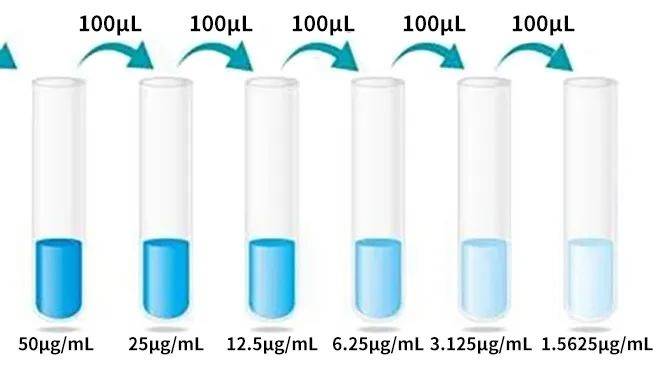
누르는 압력
가압 압력은 펠릿을 형성하기 위해 시료-바인더 혼합물에 가해지는 힘입니다. 필요한 압력은 사용되는 시료와 바인더의 유형에 따라 달라질 수 있습니다. 일반적으로 압력이 높을수록 펠릿의 밀도가 높아지고 내구성이 높아집니다. 그러나 과도한 압력은 펠릿에 균열이나 변형을 일으켜 일관성 없는 결과를 초래할 수 있습니다. 분석법을 개발하는 동안 각 시료 유형에 맞는 최적의 압력 범위를 설정하는 것이 중요합니다. 이 범위는 펠릿의 품질과 재현성을 보장하기 위해 일관되게 유지되어야 합니다.
펠릿 두께
최종 펠릿의 두께는 신중하게 제어해야 하는 또 다른 요소입니다. 펠릿의 두께는 시료의 균일성과 분석 결과의 정확도에 영향을 미칩니다. 펠릿이 두꺼우면 압축이 균일하지 않아 분석 신호에 변화가 생길 수 있습니다. 반대로 지나치게 얇은 펠릿은 너무 약해서 깨지기 쉬울 수 있습니다. 이상적인 펠릿 두께는 일반적으로 사용 중인 분석 기술의 특정 요구 사항에 따라 1~3mm 사이입니다. 일관된 펠릿 두께를 유지하는 것은 재현 가능한 결과를 보장하는 데 매우 중요합니다.
실무적 고려 사항
실제로 압축 펠릿을 준비하려면 시료를 적절한 입자 크기로 분쇄하고, 시료를 바인더와 혼합하고, 혼합물을 펠릿 프레스 다이로 옮기고, 펠릿을 형성하는 데 필요한 압력을 가하는 등 여러 단계가 포함됩니다. 각 단계는 최종 펠릿의 품질을 보장하기 위해 정밀하고 일관성 있게 수행되어야 합니다. 오류를 최소화하고 신뢰할 수 있는 분석 결과를 얻으려면 샘플 혼합물을 다이에 고르게 펴고 정확한 압력을 가하는 등 세부 사항에 대한 주의가 필수적입니다.
E - 장비: 작업에 적합한 도구 선택
XRF 펠릿 프레싱의 경우 정확하고 일관된 결과를 보장하기 위해서는 올바른 장비를 선택하는 것이 중요합니다. 이 프로세스에는 분말 샘플에서 균일하고 단단한 펠릿을 만든 다음 X선 형광(XRF) 분광법을 사용하여 분석하는 과정이 포함됩니다. 이 섹션에서는 최고의 장비를 선택할 때 고려해야 할 주요 사항을 안내하며, 특히 KINTEK 자동 유압 프레스 및 기타 필수 도구 사용의 이점에 중점을 둡니다.
수동 및 자동 유압 프레스 비교
수동과 자동 유압 프레스 중 어떤 것을 선택하느냐는 XRF 분석의 양과 빈도에 따라 크게 달라집니다. 수동 유압 프레스는 비용 효율적이지만, 특히 높은 압력을 가할 때 작업자의 상당한 육체적 노력이 필요합니다. 이러한 프레스는 일반적으로 최대 250kN의 최대 압력력을 제공하며, 명확하게 설계된 압력력 표시와 핸드 레버를 통한 간단한 조작을 제공합니다. 하지만 높은 압력을 얻기 위해서는 힘이 많이 들고 압력 적용에 불일치가 발생할 수 있습니다.
반면에 자동 유압 프레스는 특히 바쁜 실험실에서 여러 가지 장점을 제공합니다. 이러한 프레스는 한 번 설정하면 자동으로 작동하도록 프로그래밍할 수 있으므로 기술자는 다른 작업에 집중할 수 있습니다. 자동 프레스는 30톤, 40톤, 60톤 등 다양한 구성으로 제공되며, 작동에 필요한 노동력이 훨씬 적습니다. 따라서 사용 중 변수가 제거되어 정확성과 일관성이 향상되므로 빈번한 프레스 작업에 이상적입니다.
킨텍 자동 유압 프레스의 장점
킨텍은 XRF 펠릿 준비를 위해 특별히 설계된 자동 유압 프레스를 포함한 고품질 실험실 장비의 유명한 제조업체입니다. 이러한 프레스는 처리량이 많은 실험실의 요구 사항을 충족하도록 설계되어 몇 가지 주요 이점을 제공합니다:
-
높은 처리량: 킨텍 자동 유압 프레스는 빠르고 효율적으로 작동하도록 설계되어 여러 시료를 빠르게 준비할 수 있습니다. 이는 대량의 XRF 분석을 처리하는 실험실에서 특히 유용합니다.
-
통합 펠렛 다이: 이 프레스에는 통합 펠릿 다이가 장착되어 있어 프로세스를 간소화하고 각 시료를 설정하는 데 필요한 시간을 줄여줍니다. 이 다이는 정확한 XRF 분석에 중요한 균일한 펠릿 형성을 보장하도록 설계되었습니다.
-
자동화: 킨텍 프레스의 자동화 기능을 통해 일관되고 반복 가능한 결과를 얻을 수 있습니다. 프로그래밍이 완료되면 프레스가 자율적으로 작동하여 인적 오류의 위험을 줄이고 각 시료가 동일한 정확한 표준에 따라 준비되도록 보장할 수 있습니다.
-
사용 편의성: 킨텍 프레스는 사용자 친화적인 인터페이스로 설계되어 기술 전문 지식이 부족한 사람도 쉽게 작동할 수 있습니다. 또한 이 프레스는 자동 압력 완화 시스템을 갖추고 있어 과압을 방지하고 안전을 보장합니다.
-
다목적성: 킨텍 자동 유압 프레스는 왁스와 같은 추가 바인더가 필요할 수 있는 시료를 포함하여 다양한 시료 유형과 호환됩니다. 이러한 다용도성 덕분에 프레스는 다양한 재료를 처리할 수 있어 모든 XRF 실험실에서 다용도 도구로 사용할 수 있습니다.

XRF 펠릿 준비를 위한 필수 도구
이외에도유압 프레스외에도 여러 가지 다른 도구가 성공적인 XRF 펠릿 준비를 위해 필수적입니다:
-
XRF 펠릿 다이: 이 다이는 분말 시료에서 균일한 펠릿을 만들기 위해 특별히 설계되었습니다. 40mm, 32mm, 15mm 등 다양한 직경으로 제공되므로 시료 크기에 따라 유연하게 사용할 수 있습니다.
-
펠릿 프레싱 윤활제: 다이와 시료에 윤활제를 얇게 바르면 달라붙는 것을 방지하고 원활한 펠릿 형성을 보장할 수 있습니다. 윤활제는 다양한 시료 유형에 맞게 다양한 제형으로 제공됩니다.
-
분말 시료: 분말 시료의 품질은 정확한 XRF 분석을 위해 매우 중요합니다. 시료는 미세하고 균일한 분말로 분쇄되어야 하며 덩어리나 불순물이 없어야 합니다.
-
왁스 바인더: 일부 경우, 특히 잘 결합되지 않거나 쉽게 부서지는 재료의 경우 분쇄 단계에서 왁스 바인더를 추가하면 펠릿 형성을 개선할 수 있습니다. 왁스 바인더는 분말 또는 정제 형태로 제공되며 시료를 안전하게 결합하는 데 필요한 최소량만 사용해야 합니다.
S - 안전: 시료 준비 중 자신을 보호하기
분말 시료를 취급하고 XRF(X-선 형광) 장비를 사용할 때는 안전을 가장 우선적으로 고려해야 합니다. 개인 보호 장비(PPE)와 안전 프로토콜 준수의 중요성은 아무리 강조해도 지나치지 않습니다. 이 섹션에서는 작업자의 건강과 측정의 정확성을 보장하는 안전의 중요한 측면에 대해 자세히 살펴봅니다.
개인 보호 장비(PPE)
개인 보호 장비는 분말 시료 및 XRF 장비와 관련된 잠재적 위험으로부터 작업자를 보호하는 데 필수적입니다. 개인 보호 장비의 주요 구성 요소는 다음과 같습니다:
- 장갑: 분말 시료를 다룰 때는 항상 장갑을 착용하여 잠재적인 위험 물질과의 피부 접촉을 방지해야 합니다. 일반적으로 화학 물질과 분말에 대한 내성이 있는 일회용 니트릴 장갑을 사용하는 것이 좋습니다.
- 보안경 또는 고글: 공기 중 입자 및 잠재적 튀김으로부터 눈을 보호하세요. 측면 보호막이 있는 보안경은 포괄적인 보호 기능을 제공합니다.
- 실험실 코트 또는 앞치마: 실험실 가운이나 앞치마를 착용하여 옷이 오염되지 않도록 보호하세요. 외투는 쉽게 세탁할 수 있거나 일회용 소재인지 확인하세요.
- 호흡기 보호: 분말의 특성에 따라 유해한 입자의 흡입을 방지하기 위해 호흡보호구가 필요할 수 있습니다. NIOSH와 같은 규제 기관에서 승인한 호흡보호구를 사용하세요.

분말 샘플 취급 시 안전 수칙
가루 샘플을 올바르게 취급하는 것은 오염을 방지하고 정확한 측정을 보장하는 데 매우 중요합니다. 다음은 따라야 할 몇 가지 주요 프로토콜입니다:
- 표면 청결: 시료의 표면 청결도가 의심스러운 경우, 분쇄 전과 후의 측정 결과를 비교합니다. 결과가 크게 다를 경우, 분쇄 전과 후의 결과 차이가 측정 오차 이내가 될 때까지 샘플을 다시 분쇄합니다.
- 시료 준비: 분말 시료를 준비하는 방법에는 분말 압축, 플럭스 융합 또는 미세하게 분쇄된 분말의 직접 측정과 같은 여러 가지 방법이 있습니다. 가장 간단하고 일반적인 방법은 미세하게 분쇄된 분말을 직접 측정하는 것입니다. 이 경우 측정을 위한 큐벳과 필름을 준비합니다. 특정 작업 및 장치에 가장 적합한 필름 유형을 선택하려면 공급업체에 문의하세요.
- 시료 균질성: 자동차 촉매나 토양과 같은 벌크 시료는 측정 전에 조심스럽게 분쇄해야 합니다. 입자가 클수록 구성이 크게 다를 수 있으므로 분쇄하면 보다 균질한 샘플을 얻을 수 있습니다. 분쇄가 불가능할 경우 큐벳에 시료를 혼합하여 여러 측정 결과를 평균화합니다.
XRF 장비 사용 시 안전 수칙
XRF 장비는 X선을 사용하므로 올바르게 취급하지 않으면 건강에 해로울 수 있습니다. 다음은 XRF 분석기를 작동할 때 따라야 할 몇 가지 안전 프로토콜입니다:
-
방사선 안전: XRF 분석기는 올바르게 취급하지 않으면 해로울 수 있는 X선을 방출합니다. 항상 방사선 안전 수칙을 따르세요:
- 다른 사람으로부터 멀리 떨어지기: XRF 분석기를 사용할 때는 다른 사람과 최소 15피트(4.57미터) 거리를 유지하세요.
- 액세서리 사용: X-선 빔에 직접 노출되는 것을 최소화하려면 테스트 스탠드와 같은 옵션 액세서리를 활용하세요.
- 교육: 작업자에게 방사선 안전 교육을 실시하여 작업자가 위험과 이를 완화하는 방법을 이해하도록 하세요.
- 직접 노출 방지: 분석 중에는 절대로 샘플을 잡지 마세요. 주 빔 표시기를 주시하고 빔이 다른 사람을 향하지 않도록 하세요.
- 조심스럽게 다루기: XRF 장비를 주의해서 취급하고 사용하십시오. 현지 보관 요건에 따라 안전하게 보관하세요.
-
보호 카트리지: 보호 카트리지는 먼지와 오염 물질로부터 검출기를 보호하는 데 매우 중요합니다. 이전에 측정한 시료의 먼지와 입자가 쌓여 측정 결과를 왜곡할 수 있으므로 카트리지를 정기적으로 교체하세요. 교체 주기는 측정하는 시료의 유형에 따라 달라질 수 있습니다. 예를 들어, 알루미늄 합금은 후속 측정의 정확도에 영향을 미치는 입자를 남길 수 있으므로 카트리지를 더 자주 교체해야 합니다.
-
측정 시간: 정확한 결과를 얻으려면 충분한 측정 시간을 확보하세요. 측정 시간은 측정의 정확도에 영향을 미치며, 시간이 길수록 시료의 원소 농도를 측정하는 데 오차가 줄어듭니다. 일반적으로 정확한 정량 결과를 얻으려면 10~30초가 필요합니다.
S - 전략: 일관된 시료 준비 워크플로 개발
결과의 일관성과 재현성을 보장하기 위해서는 XRF 시료 전처리를 위한 표준화된 워크플로우를 만드는 것이 중요합니다. 적절한 시료 전처리는 분석 데이터의 품질에 큰 영향을 미치기 때문에 정확한 X선 형광(XRF) 분석의 기초가 됩니다. 다른 분석 기법과 달리 XRF는 광범위한 시료 전처리가 필요하지 않으므로 비용 효율적이고 효율적인 방법입니다. 하지만 그렇다고 해서 강력한 준비 프로토콜 수립의 중요성이 줄어들지는 않습니다.
고체 시료
준비되지 않은 금속 조각부터 절단 및 연마된 금속 시료에 이르기까지 고체 시료는 정확한 결과를 얻기 위해 세심한 취급이 필요합니다. XRF 분석에 이상적인 시료는 표면이 완벽하게 평평해야 합니다. 표면이 불규칙하면 시료와 X선 소스 사이의 거리가 달라져 측정 오류가 발생할 수 있습니다. 모든 XRF 시스템은 고정된 시료와 소스 간 거리를 기준으로 보정되므로 편차가 있으면 X선 신호의 강도에 영향을 미칠 수 있습니다.
금속 합금 및 기타 고체 시료의 경우 최소한의 준비만으로도 정성 분석에 충분할 수 있습니다. 그러나 보다 정량적인 결과를 얻으려면 샘플을 절단하고 연마하는 것이 좋습니다. 표면이 거칠면 파장이 긴 요소의 산란과 재흡수가 발생할 수 있으므로 표면 마감은 가벼운 요소의 경우 특히 중요합니다. 이 효과는 에너지에 따라 달라지므로 니켈(Ni)과 같은 무거운 원소는 큰 영향을 받지 않을 수 있지만 탄소(C) 또는 황(S)과 같은 가벼운 원소는 신호 강도가 급격히 감소할 수 있습니다. 따라서 정확한 분석을 위해서는 래싱 또는 연삭을 통해 표면을 더 미세하게 마감하는 것이 필수적입니다.
분말 샘플
XRF 분석을 위한 분말 시료 준비에는 분말 압축, 플럭스 융합, 미세하게 분쇄된 분말의 직접 측정 등 여러 가지 방법이 포함됩니다. 가장 간단하고 일반적인 방법은 미세하게 분쇄된 분말을 직접 측정하는 것입니다. 이 과정에는 측정에 적합한 큐벳과 필름을 선택하는 것이 포함됩니다. XRF에 사용할 수 있는 다양한 유형의 필름이 있으며, 올바른 필름을 선택하는 것은 특정 작업과 사용 중인 장치에 따라 달라집니다. 가장 적합한 필름을 선택하려면 공급업체와 상담하는 것이 중요합니다.
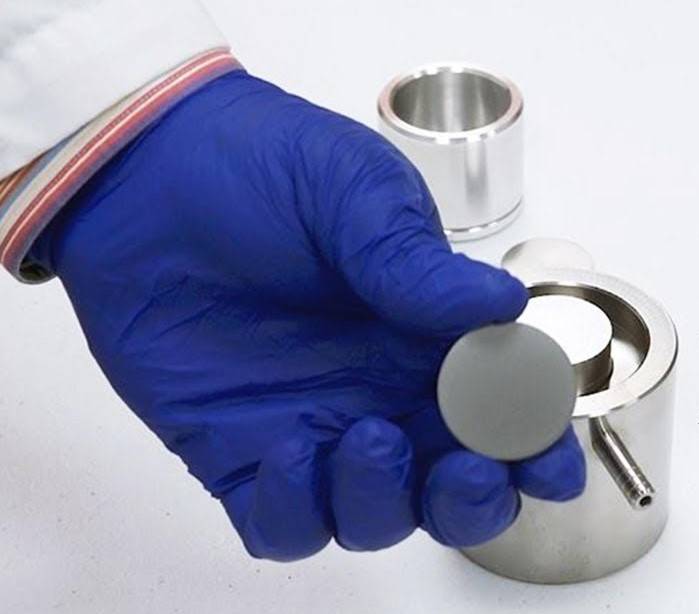
워크플로 일관성
XRF 분석의 일관성을 유지하려면 표준화된 워크플로우를 구축하는 것이 필수적입니다. 여기에는 다음이 포함됩니다:
-
표면 청결도: 분석 전에 시료 표면이 깨끗한지 확인합니다. 표면 청결도가 의심스러운 경우 시료를 연마하기 전과 후의 측정 결과를 비교합니다. 결과가 크게 다르면 분쇄 전과 후의 결과 차이가 측정 오차 이내가 될 때까지 시료를 다시 분쇄합니다.
-
미세 조정 및 보정: XRF 장비에 미세 조정 또는 보정이 필요한지 정기적으로 평가합니다. 이를 통해 장비가 최적으로 작동하고 정확한 결과를 제공할 수 있습니다.
-
테스트 시간 최적화: 관심 원소에 대한 테스트 시간을 조정하여 분석이 불필요하게 길어지지 않고 충분한 데이터를 캡처할 수 있도록 합니다.
-
올바른 모드 선택: 시료의 유형과 분석 중인 원소에 따라 XRF 분석기에서 적절한 모드를 선택합니다. 이는 결과의 정확도에 큰 영향을 미칠 수 있습니다.
-
시료 특성 이해: 시료의 이질성, 수분, 입자 크기 및 다양한 시료 용기가 결과에 미치는 영향에 유의하세요. 이러한 요소는 변동성을 유발할 수 있으므로 재현성을 보장하기 위해 반드시 제어해야 합니다.
-
표준 운영 절차(SOP) 개발하기: "목적에 맞는" 방법을 수립하고 샘플 준비에 대한 SOP를 개발하세요. 이를 통해 모든 작업자가 동일한 프로토콜을 따르도록 하여 일관된 결과를 얻을 수 있습니다.
-
품질 관리 및 보증(QC/QA): 매트릭스와 일치하는 인증 기준물질(CRM), 블랭크, 중복 및 복제본의 사용을 포함하여 적절한 QC/QA 조치를 구현합니다. 이는 결과의 정확성과 신뢰성을 검증하는 데 도움이 됩니다.
T - 교육 및 규정 준수: XRF 기술 향상
XRF 분석을 마스터하는 데 있어 교육과 규정 준수의 역할은 아무리 강조해도 지나치지 않습니다. 적절한 교육을 통해 작업자는 X선 형광(XRF) 기술의 복잡성을 이해할 수 있으며, 현지 규정을 준수하면 안전하고 정확한 장비 사용을 보장할 수 있습니다. 이 섹션에서는 교육의 중요성, 현지 규정 준수의 필요성, 자격을 갖춘 인력 교육의 이점에 대해 자세히 설명합니다.
교육의 중요성
교육은 숙련된 XRF 분석의 초석입니다. 작업자는 XRF 기술의 원리, 작동 및 잠재적 함정을 포함한 이론적 측면에 대해 잘 알고 있어야 합니다. 적절한 교육이 없으면 가장 진보된 XRF 분석기라도 부적절한 보정, 시료 준비 또는 측정 기술로 인해 부정확한 결과를 얻을 수 있습니다.
예를 들어, 초보자가 가장 흔히 저지르는 실수 중 하나는 부적절한 시료 준비입니다. 금속이나 합금과 같은 고체 시료는 철저히 세척해야 하며, 교차 오염을 방지하기 위해 재료별로 다른 파일을 사용해야 하는 경우가 많습니다. 토양이나 자동차 촉매와 같은 벌크 시료는 균질성을 보장하기 위해 분쇄하거나 혼합해야 합니다. 적절한 교육을 통해 작업자가 이러한 미묘한 차이를 이해하면 보다 신뢰할 수 있고 정확한 결과를 얻을 수 있습니다.
또 다른 중요한 측면은 교정입니다. XRF 분석기는 기본 파라미터 방법을 사용하므로 특정 작업에 대한 사전 교정이 필요합니다. 합금에 대해 보정된 분석기를 귀금속이나 토양 분석에 잘못 사용하면 정확도가 떨어질 수 있습니다. 교육을 통해 작업자는 각 작업에 맞는 올바른 교정을 선택할 수 있는 지식을 갖추게 되어 정성적 결과뿐만 아니라 정량적 결과도 보장할 수 있습니다.
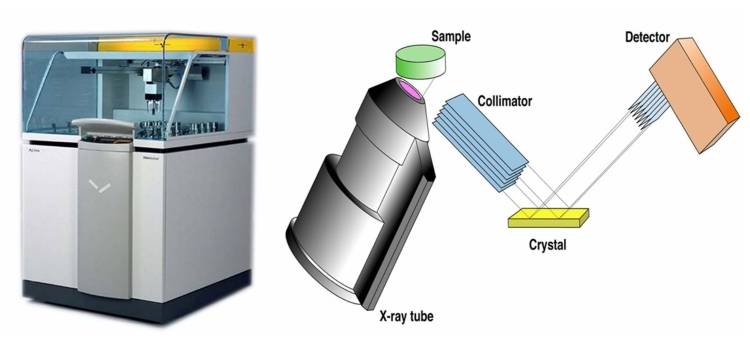
현지 규정 준수
현지 규정을 준수하는 것도 마찬가지로 중요합니다. XRF 분석기는 강도는 낮지만 장시간 노출될 경우 건강에 위험을 초래할 수 있는 X선을 사용합니다. 허용 노출 한도, 안전 프로토콜 및 장비 표준과 같은 측면을 다루는 규정은 국가와 주마다 다릅니다. 이러한 규정을 준수하면 작업자의 안전뿐만 아니라 생성된 데이터의 신뢰성도 보장됩니다.
예를 들어, 특정 규정에서는 작업자가 보호 장비를 착용하거나 연속 노출 시간을 제한하도록 요구할 수 있습니다. 다른 규정에서는 정기적인 장비 점검과 유지보수를 의무화하기도 합니다. 이러한 규정을 이해하고 준수하는 것은 안전한 작업 환경을 유지하고 XRF 분석기가 법적 매개변수 내에서 작동하도록 보장하는 데 매우 중요합니다.
결론: XRF 분석에서 우수성 달성하기
정확하고 신뢰할 수 있는 분석 결과를 얻기 위해서는 XRF 시료 전처리를 숙달하는 것이 중요합니다. 준비, 레시피 설계, 장비 선택, 안전 프로토콜, 전략 개발, 교육 및 규정 준수 등 7가지 PRESS 전략을 실행하면 XRF 분석의 품질과 일관성을 크게 향상시킬 수 있습니다. 이러한 전략은 최적의 시료 전처리를 보장할 뿐만 아니라 분석가를 보호하고 업계 표준을 준수합니다. 이러한 기술을 제대로 이해하고 적용하면 탁월한 XRF 분석을 달성하여 연구 및 테스트 프로세스에서 더욱 정확하고 신뢰할 수 있는 결과를 얻을 수 있습니다.
관련 제품
- FTIR용 XRF & KBR 플라스틱 링 실험실 분말 펠렛 프레스 몰드
- XRF 및 KBR 펠렛 프레스용 자동 실험실 유압 프레스
- FTIR용 XRF & KBR 스틸 링 실험실 분말 펠릿 프레스 몰드
- 실험실용 XRF 붕산 분말 펠렛 프레스 몰드
- XRF KBR FTIR 실험실 응용 분야를 위한 실험실 유압 펠릿 프레스
